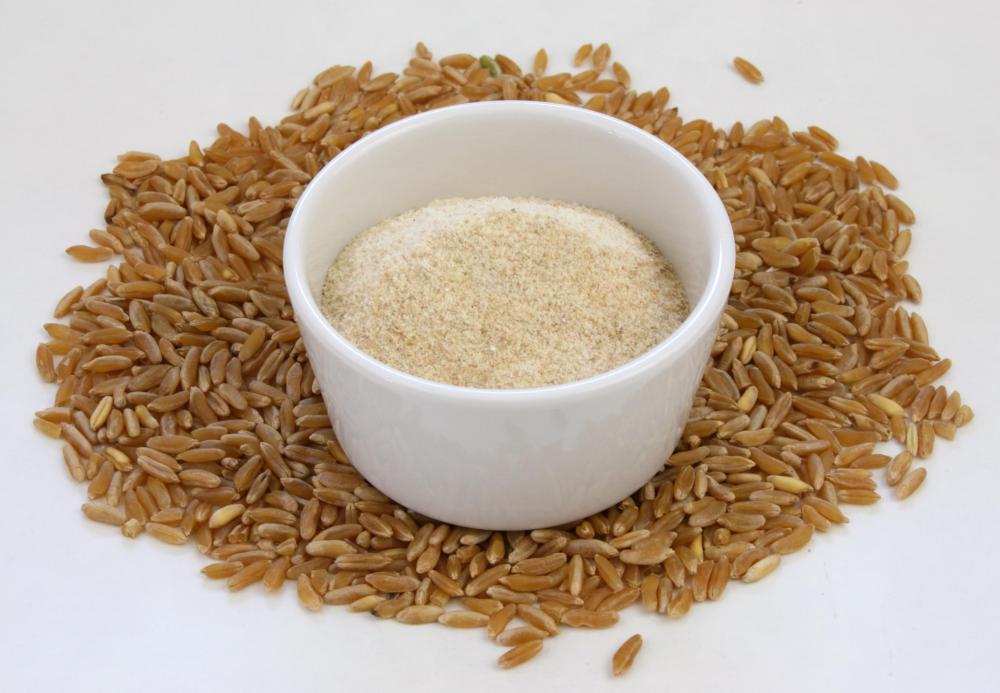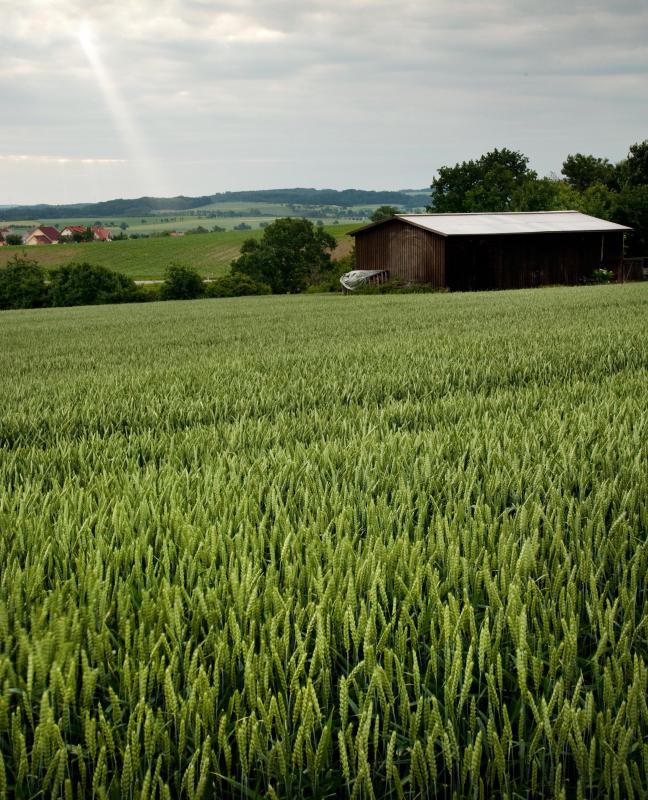At DelightedCooking, we're committed to delivering accurate, trustworthy information. Our expert-authored content is rigorously fact-checked and sourced from credible authorities. Discover how we uphold the highest standards in providing you with reliable knowledge.
What is Kamut® Grain?
Kamut® grain is an ancient grain, and a close relative to durum wheat. It is growing in popularity as an alternative to traditional wheat sources because it is considered nutritionally superior to many other forms of wheat. Research suggests that Kamut® grain may first have been grown in either Egypt or Asia.
When it was first grown in the US, it had no trademark, and was grown mainly as a novelty grain by one farmer in Montana, who got samples of the grain from his son, a WWII airman. The wheat was dubbed King Tut’s grain because of the suggestion of its ancient uses and possible origins. It wasn’t until the 1970s that any farmers thought to grow the wheat in a commercial manner, and there was only one remaining sample of the Montana farmer’s harvest, grown in the 1940s, with which to work.

T. Mack Quinn, another Montana farmer, obtained this sample of the Kamut® grain, and spent the next ten years attempting to grow it, and gleaning information about its origins. It was during Quinn’s work with the grain that most information about its origins in the Fertile Crescent, and its close relationship to durum wheat were obtained. Quinn, after realizing the hardiness of the grain, registered this special ancient wheat under the trademarked name Kamut® grain, in the early 1990s.

There are some special attributes belonging to Kamut® grain. It is extremely resistant to pests and can be more easily grown organically than most other types of wheat. It’s also been discovered that about 70% of people allergic or sensitive to traditional wheat are not allergic to Kamut® grain. Further, this type of wheat is far more nutritionally sound than other wheat sources. Protein content is 40% higher than traditional wheat, vitamin content is higher, and it has a higher lipid to carbohydrate ratio, which means the grain produces greater energy.

Even though Kamut® grain is trademarked, there are now many farmers who grow it, since it's in high demand for a variety of commercial baked goods. It’s also available in flour form. Most US farmers who grow this special wheat belong to the organization Kamut Association of America (KANA), so they can work on supplying the grain to people who like baking and to food manufacturers.
It’s certainly worth trying Kamut® grain in your own baking or in manufactured goods. Many say one of its distinct differences from traditional wheat is that it is not bitter and has a natural sweetness. If you bake with this wheat, you won’t need to add as much, if any, sugar to your recipes to counterbalance the occasional bitterness present in traditional wheat. Look for this grain in natural foods stores, where it may be sold packaged or in bulk. If you are allergic or sensitive to wheat, this may be the perfect wheat substitute, but do check with your doctor first before you try it.
AS FEATURED ON:
AS FEATURED ON:













Discussion Comments
I love kamut grass, and I feed it to my whole family of six. It got very expensive until I found a little gem online They sell organic kamut juice powder for $49 per pound. I actually tripled my family's intake of kamut juice daily and it saved me about $1,000 per year.
My favorite thing is I don't have to do dishes or clean sharp juicer parts for hours.
Kamut is also great as a sprout. You can buy organic Kamut in the bulk section of a health food store and sprout it the way you do regular wheat. I put the sprouts on top of salads, in soups and grow the sprouts as grass for my cat who demands a taste every time I go near the window sill on which it grows.
No! If you have celiac, you can't eat kamut. It's too close to regular wheat for most people who can't process gluten to be safe eating it.
Other anon: I think it's usually left whole, so you should be fine.
We use Kamut in our home bread making. It's wonderful to work with, and has a mild, wheaty taste. We order by the pallet (for groups) from Montana Flour. I don't believe the grain is gluten-free, it contains protiens, just like other wheat, but for some, it's more tolerable, and certainly has a better taste than red or white wheat. We love Kamut!
is Kamut flour considered gluten free for celiac people?
is this considered a gluten-free product?
Where can I buy the grain as I would like to grind it just when I need it. This grain makes the best pancakes I have ever tasted. Lynda & Douglas
I'm only eating 100% whole wheat flour and other grains. Does this qualify?
Post your comments